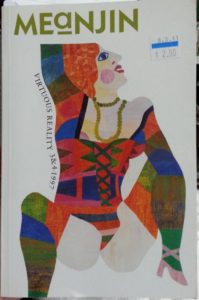I’ve been pondering the vast leap in numbers of published authors now that many companies make it so easy to publish your own manuscripts and just wondering what that does to the market. I heard some numbers the other day and I forget the exact digits but my memory tells me it was something like 50 new books being published every single day. By the law of averages some of those will be quality but most won’t.
In the days of traditional publishing a lot more thought went into publishing a book. The publishers had to put in a lot of money to get a book published, including money for editors, proofreaders, cover design, desktop publishing and finally, printing, distribution and marketing. In order to give themselves a really good chance of making a profit on the book they choose incredibly carefully, reading their slush pile when they needed to but relying on their tried and true authors to write them books they knew they could sell heaps of.
And when it came to printing they would go for value for money. I’m in the process of printing new business cards. The difference between printing 500 cards and 1,000 cards is $10. Why? Because most of the cost is in the set up. Once they have the printing machines running, it’s really easy to just keep going and double the number you need for little cost. Publishers have worked on this principle for many years, when they feel the book has finished selling they dump the bulk of the remaining texts into remainder bins. You’ve seen them in supermarkets or newsagencies where you can buy a book for $4.95 when you’ve normally pay $18.95.
After three paragraphs you’re probably wondering where I’m actually going with these thoughts and you’d be right to ask. My current reading matter is a copy of Meanjin from 1997. The first essay is called The State of the Art by John Barth. At the time of writing he’d been in the writing business for 41 years so he had a fairly good idea of what he’s saying. He was talking about ebooks (he calls them e-fiction, it’s that early in the realm of ebooks) and how he’d been given a manuscript back in 1981 that was wordprocessed! It was the very first one, before that he’d been given hand written manuscripts and some typed on a typewriter (probably most of them were on a manual typewriter as this is only a couple of years after I learned touch typing on a manual typewriter and the year before I first used a wordprocessor in 1982). Barth showed it to Leonard Michaels and the response was:
This is terrible! They’re going to think the stuff is finished, and it only looks that way.
And therein lies my point. How many people write the first draft of a book on a computer with software such as Word which can make anything look good (good but not typeset) and think they’ve finished? How many of those people then upload it to one of these self publishing places and declare it ready for people to buy? I’m sure some of these books do actually go through several drafts and have actually been read by other people but that begs the next question. How many people actually get someone objective to read their work and give them proper feedback? How many of them have family and friends read it, people who just want to be encouraging and tell them it’s good, people who don’t really understand there’s more to selling than just reading?
One blog entry I read some time ago caused a great stir in the book blogosphere. It was meant to be a book review but the blogger mentioned the vast number of typos she found and then all hell broke loose. There were many comments including some from the author responding with swear words and hostility both to the original blogger and to some of the commenters. Typos make it harder for many readers, sometimes they can totally change the meaning of the sentence. This is the biggest reason you need to have your manuscript proofread. The minimum I’d suggest before you upload your manuscript and turn it into a book is editing by an editor and proofreading by a proofreader, get someone who is objective and doesn’t know you.
As you can see I have far more questions than answers. I am approached by a lot of new authors and I do try to give them some time as it’s important for people to actually start somewhere. I often wish I was approached by them with the view to reading their works for suitability for publishing rather than with the view that I’ll write about them on my blog and give them some free marketing.

Now that we can make any text look publishable and legible (you should see my handwriting, so unreadable) with just a few minutes work the temptation is to write the book and get it out there ready for selling. So many people think that just because it’s in the world wide web that people will see it and buy it. I know I had similar thoughts when I first started selling pre-loved books online. I thought people will somehow just SEE my excellent and funny copy and think ‘that book looks good, I’ll buy it’, how wrong I was. There’s far more to selling a book than listing it for sale and that’s the subject of another rant.
Before I hit 1,000 words I’m going to finish with a repeat of my previous advice. Get some objective advice before you publish your manuscript.


Can I recommend a guide for people who want to self-publish: Write to Launch by Kylie Dunn http://www.dinkylune.com/writetolaunch/. Kylie spoke to the Society of Editors (Tas) last month and clearly knows what she’s talking about. We all appreciated her first piece of advice: ‘Hire an editor’. (While I’m an editor myself, I specialise in web content, not books.)
Thank you for putting that here!
All of this can apply equally to publishing anything (not just books etc) – for example these days you can buy (or download) home-drafted sewing patterns (usually in pdf format which you print at home or officeworks and then tile together with sticky tape) with so many errors that it’s no wonder the “author” is only working from home – or they should be! Often notches (matching points on two pattern pieces) don’t match, or there will be arm holes on an adult pattern piece that a child would have trouble getting into! I watched a video yesterday on making a wallet “so easy only 4 pattern pieces and they’re all rectangles!” But one piece was given as 8″ x 10 1/2″ and we were then told to fold the piece on the 8 1/2″ side. Only when I did that and pinned another piece to it it was obvious the first piece actually needed to be 9″ wide. Which also meant that two other pieces given with a width of 4 1/2″ needed to be 5″! I wish there were a way of stopping these patterns from escaping into the wild because so often it seems like a great idea but all it ends up to be is a waste of fabric and time.
I’m cringing reading about this. When a pattern doesn’t work I blame my skills so to have something actually wrong with the pattern wouldn’t occur to me.
I do see a blog coming out of your thoughts. I reckon you should write it, you’ve been sewing long enough.